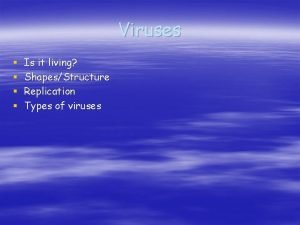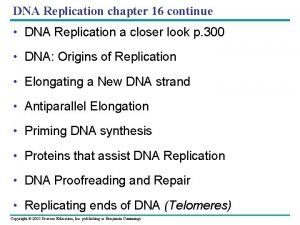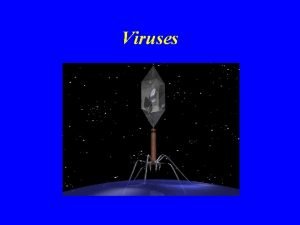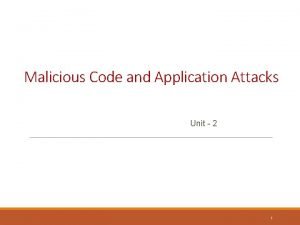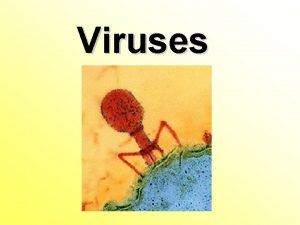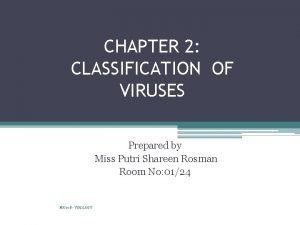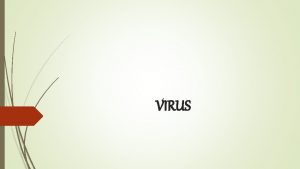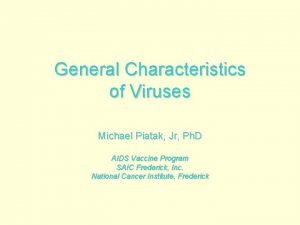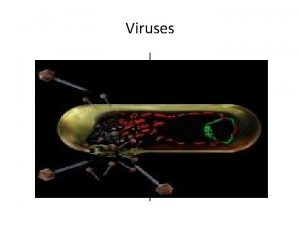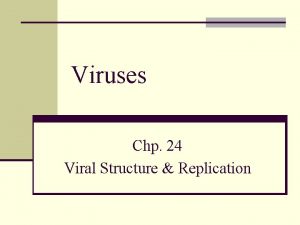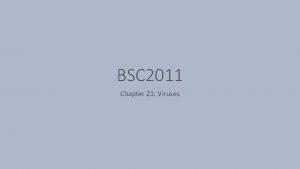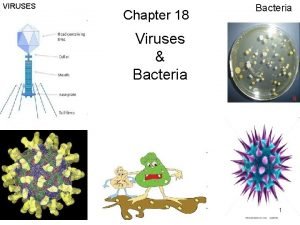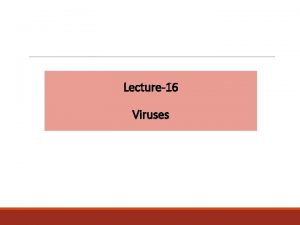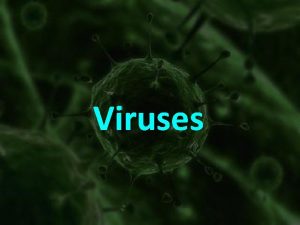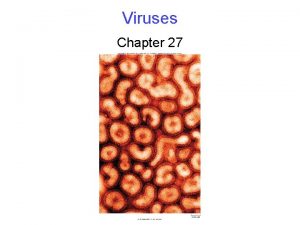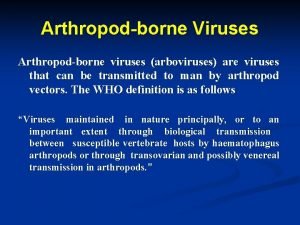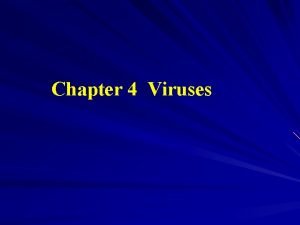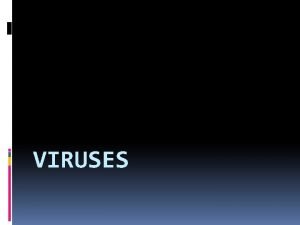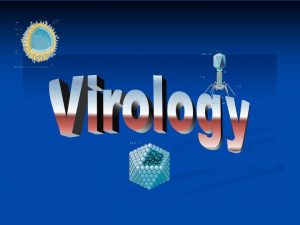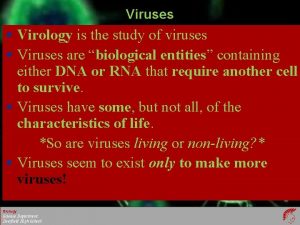Viral Replication Viruses Part II Viral Replication It













- Slides: 13

Viral Replication Viruses Part II

Viral Replication • It was not until the 1950 s that scientists were able to isolate and identify how viruses multiplied in a host • Much of the early research was performed using a bacteriophage (or a virus that infects only a bacteria) • Specifically, scientists studied T 4 bacteriophage that infected the E. coli bacteria

Lytic Cycle • Virulence – the ability of a pathogen to affect cells • Some viruses are nonvirulent to specific types of cells • Ex: human could consume the leaves of a tobacco plant with TMV and not become infected • Scientists call the activity of a virulent virus the lytic cycle

Lytic Cycle � During the lytic cycle: • the virus invades the cell, • uses the resources of the host cell to produce multiple copies of the viral nucleic acid, • destroys the host cell • Releases new virions (complete virus particle) into the environment

Lytic cycle Steps • Step 1 Attachment • The glycoprotein (“spikes”) on the outside of a virus capsid adhere to the cell wall/cell membrane of its intended host

Lytic cycle – Step 2 • Step 2 – Entry • Once attached to the exterior of the host cell, enzymes begin to break it down and the core (DNA/RNA) is injected into the host cell

Lytic cycle • Step 3 – Replication and Transcription • Using the cell’s enzymes and organelles, the virus begins to produce multiple copies of the viral nucleic acid, m. RNA, enzymes, and proteins

Lytic cycle • Step 4 – Assembly • The virus proteins form capsids around the replicated viral DNA/RNA, forming new virions

Lytic Cycle • Step 5 – Release • Eventually, the resources of the host cell are used up, the organelles being used wear out, and the enzymes coded by the virus cause the cell to lysis or burst open • This releases the new virions into the environment and potentially infecting new host cells

Lytic cycle • Certain bacteriophages, human polio, influenza are relatively virulent → meaning they can infect one cell and complete the lytic cycle within 30 minutes

Lysogenic cycle • Not all viruses destroy the host cell immediately after the entry phase… • During the lysogenic cycle, cycle a virus that enters a cell may remain inactive (or latent) for long periods of time • While in the latent stage, the virus has inserted its genome into the host’s DNA and it is replicated each time the cell undergoes cell division • Essentially, the lysogenic viruses reproduce each time the cell divides so that all new cells have the virus in them

Lysogenic Viruses �A lysogenic virus may lay dormant until stimuli (like UV radiation, temperature change, or other agents) cause it to become virulent and undergo the lytic cycle

Other Kinds of Viruses �Persistent infections – the host cell does not go through the lytic cycle but slowly releases virus particles �Transforming viruses – significantly alter the cell’s metabolism by adding new genetic info but does not destroy the cell
 Lytic cycle animation
Lytic cycle animation Unlike lytic viruses, lysogenic viruses do not
Unlike lytic viruses, lysogenic viruses do not Replication of viruses
Replication of viruses Section 24-1 viral structure and replication
Section 24-1 viral structure and replication Bioflix activity dna replication nucleotide pairing
Bioflix activity dna replication nucleotide pairing The replication bubble and antiparallel elongation
The replication bubble and antiparallel elongation Lesson 1: viruses
Lesson 1: viruses What is the smallest infectious disease agent
What is the smallest infectious disease agent General properties of viruses
General properties of viruses Viruses
Viruses Importance of viruses
Importance of viruses Nomenclature of viruses
Nomenclature of viruses General characters of viruses
General characters of viruses Tcid
Tcid


